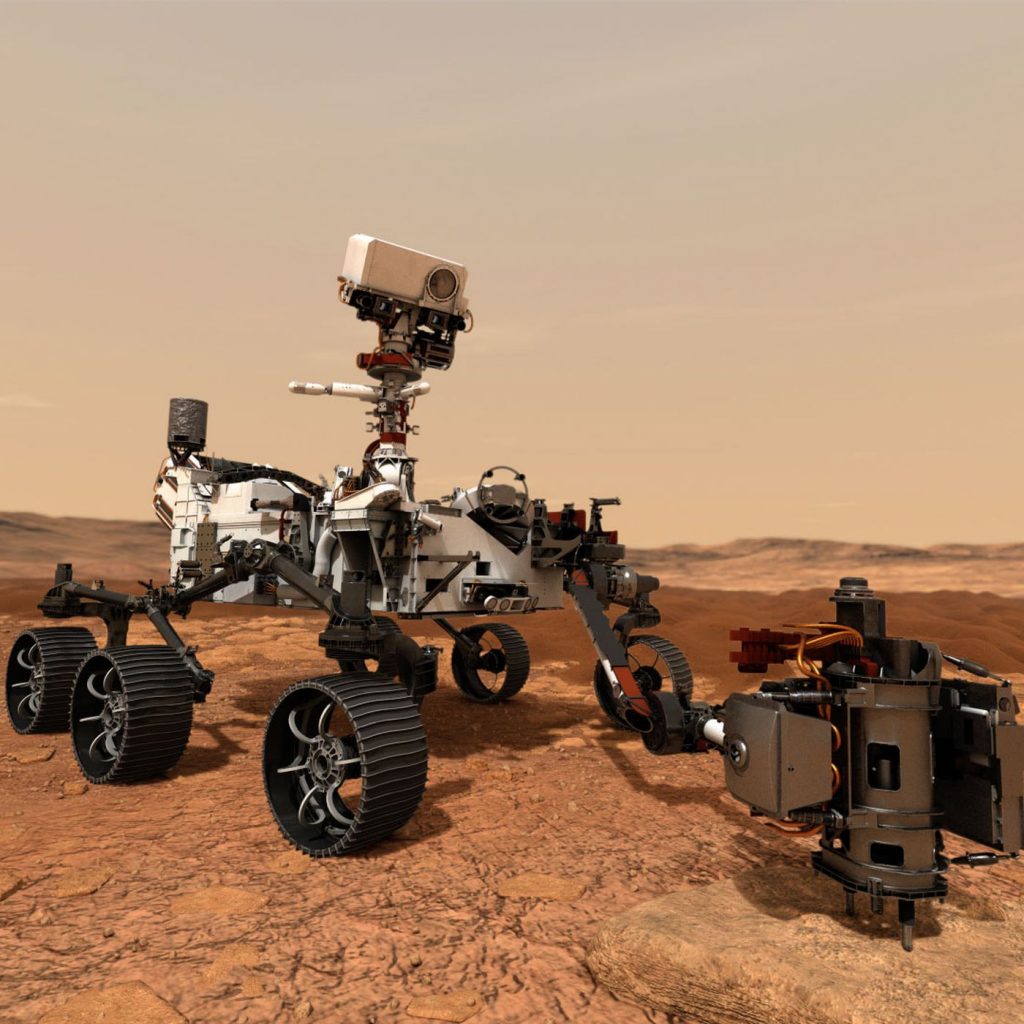
Messages aren’t just for bottles these days, and the one inscribed in Morse code on the license plate of NASA’s new Mars rover, Perseverance, will make its way much farther than the distance of an arm’s throw—with Ham-friendly lingo in tow.
The $2 billion rover, built at the Jet Propulsion Laboratory in California, is readying itself (with the help of NASA engineers) for a July launch that will initiate a seven-month voyage to the red planet to search for signs of past microbial life. Perseverance will collect rock and soil samples that will be returned to Earth and analyzed in NASA’s state-of-the-art facilities.
The Rover, originally known by the unassuming title of Mars 2020, received its moniker as the result of a nationwide “Name the Rover” essay contest open to K-12 students. More than 10.9 million entries were received. In January, only nine entries remained for the 4,700 volunteer judges to review. Perseverance, suggested by seventh-grader Alexander Mather, won out (you can hear his essay here) and the rest is history—in the making.
Perseverance takes with it the names of the more than 10.9 million contest participants inscribed in minuscule type on three metal microchips on its rear license plate, as well as essays from the top 155 finalists—and the rover’s carrying capacity for messages of significance doesn’t stop there.
Twitter came alive recently when fans of the rover noticed a hidden message concealed in the diagram of Earth, Mars, and the sun etched inconspicuously on the rover’s license plate. The dots and dashes of the image double in purpose as a Morse code message that reads, “Explore as One.” It’s not the first time NASA—known for cutting-edge communication, science, and technology—has applied the old-school mode of communication to make its mark in outer space.
When engineers at the Jet Propulsion Lab, where Perseverance and its predecessor Curiosity were built, received orders to add standard holes to Curiosity’s six wheels to avoid issues with dirt accumulation that had doomed prior rovers, they rebelled against NASA’s request and instead added these—tires with a series of Morse code dots and dashes that imprinted the initials JPL (the laboratory’s initials) onto Martian dirt as the rover explored the planet.
No stranger to Amateur Radio communication methods, NASA has encouraged programs like SAREX that provide communication between astronauts in low-earth orbit. Ham operators across the globe use ARISS for communication between students and astronauts, and there is a long history of Hams in space, including Bouvet Island DXpeditioner, the late Chuck Brady.
For more information on the mission, visit https://mars.nasa.gov/mars2020/, follow the Perseverance Mars rover’s official account on Twitter @https://twitter.com/NASAPersevere, or connect for Facebook updates @https://facebook.com/NASAPersevere.

